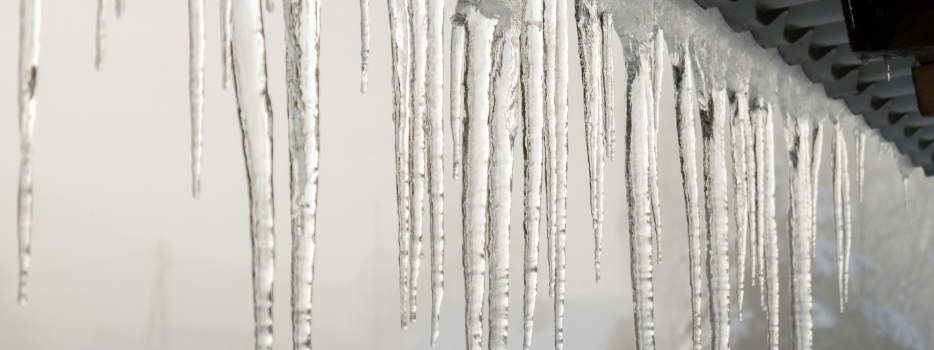Ice dams are a common winter hazard that can cause significant damage to buildings, particularly in regions with harsh winters like the Midwest. Ice dams prevent melting snow from draining and force water into walls, ceilings, and insulation. For businesses, this can lead to costly repairs and operational disruptions. Understanding the causes and prevention strategies for ice dams is important for mitigating risk and protecting your assets.
What are ice dams?
An ice dam is a ridge of ice that typically forms at the edge of a roof. As snow on the roof melts, water flows downward. When it reaches the colder eaves or gutters, it freezes and creates a blockage. Subsequent melting snow pools behind the dam, seeping into the building and causing damage to roofs, insulation, walls, ceilings, and other fixtures. Key contributing factors include:
Heat loss
Warm air escaping from the attic heats the roof, melting the snow. When the water flows down to areas below 32 degrees Fahrenheit, such as the lower roof, it refreezes and forms a dam.
Inadequate ventilation
Poor ventilation leads to uneven roof temperatures. Natural roof ventilation can help maintain uniform roof temperatures, reducing the likelihood of ice dam formation.
Blocked drainage
Clogged gutters and downspouts exacerbate water pooling and freezing. Leaves and other debris left in the gutters before winter can contribute to ice buildup.
Real-life consequences of ice dams
A Wisconsin organization experienced more than $90,000 in damages due to ice dams when snowmelt backed up through the shingles, causing extensive damage to drywall, insulation, and other components. Removing the dams required invasive steaming and scraping at a cost of $6,000. The ice dams had to be removed before any repairs could be completed, demonstrating how ice damming can disrupt business operations. This example highlights the importance of proactive prevention to avoid such financial and operational setbacks.
Proactive measures to prevent ice dams
Prevention is far more cost-effective than dealing with the aftermath of an ice dam. Ice dam prevention not only protects your property but also reduces long-term costs. Implementing these strategies can safeguard your property:
Optimize insulation and ventilation.
Maintain proper drainage.
Remove snow safely.
Install preventative systems.
Inspect and upgrade key systems.
Emergency actions for ice dams
If water is already seeping into your building, take immediate steps to minimize damage:
- Make channels through the ice dam to allow water to drain off the roof. Contracting with a professional is highly recommended for this type of job.
- Hire a reputable contractor to remove snow from the roof as doing so can be dangerous. If all the snow is removed quickly, there won’t be any additional liquid to cause damming in the eaves and gutters.
Ice dams aren’t just a seasonal nuisance, they’re also a costly threat to business operations. By addressing heat loss, maintaining proper drainage, and implementing proactive measures, business owners can effectively protect their buildings from winter’s challenges. Don’t wait for an ice dam to form, invest in prevention today to safeguard your property and your bottom line.






